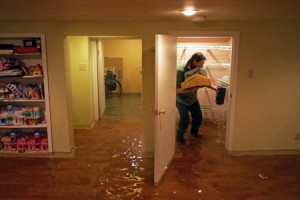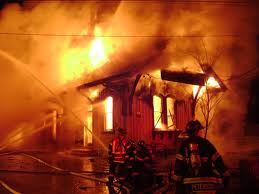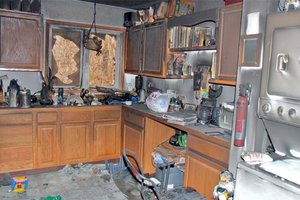McKinney Roofing – Wind Damage, Part 1
McKinney Roofing – Wind Damage, Part 1
by Kenton Shepard and Nick Gromicko
WHAT CAUSES WIND?
In talking about wind damage, we should first cover some basics.
As air in warmer areas rises, cooler air moves in to replace it. It’s this replacement air that we experience as wind. The force that pulls the replacement air is called “convection.” Convection can cause both updrafts and downdrafts, which create wind with different characteristics, including varying:
- direction;
- strength;
- duration; and
- speed.
Hurricanes
This process happens on both large and small scales. At the large end of the scale are hurricanes in which the area of strong winds might be between 25 and 150 miles wide. Hurricanes are classified according to wind speed:
- Category 1 = winds 74 to 95 miles per hour;
- Category 2 = winds 96 to 110 miles per hour;
- Category 3 = winds 111 to 130 miles per hour;
- Category 4 = winds 131 to 155 miles per hour; and
- Category 5 = winds greater than 155 miles per hour.
Tornadoes
- F0 = winds 65 to 85 miles per hour (53.5% of all tornadoes);
- F1 = winds 86 to 110 miles per hour (31.6% of all tornadoes);
- F2 = winds 111 to 135 miles per hour (10.7% of all tornadoes);
- F3 = winds 136 to 165 miles per hour (3.4% of all tornadoes);
- F4 = winds 166 to 200 miles per hour (0.7% of all tornadoes); and
- F5 = winds greater than 200 miles per hour (less than 0.1% of all tornadoes).
Many other convection-related wind events occur both with and without storms. Another condition that creates winds which can damage roofs is large-scale weather patterns that produce a strong, deep flow of air which passes over a mountain chain.
Forced up out of its natural path by the peaks, the wind seeks to return to its original level. But before settling back into a horizontal flow across the plains, it oscillates through several up-and-down cycles. As you can see in this illustration, these winds will actually bounce several times, and they can cause damage in certain areas with some predictability. If you’re inspecting in an area that fits this description, be looking for wind damage. These winds can slam into the ground at over 100 miles per hour.
You can sometimes spot these areas even when the wind is not blowing.
Over many thousands of years, the area near the base of the foothills where the wind first bounced has developed a trough, with soil scooped out by the wind.
This is often more pronounced below geological features which channel wind, such as canyons.
No need to struggle deciding which repairs you will make to your McKinney Roofing Damage- you have enough to think about. Your insurance will cover the cost of your McKinney roofing repairs. We are the McKinney roofing company that knows the complete ins and outs of what needs to be done to completely take care of your McKinney roofing repair At Go Go Green Roofing and Solar we will take care of the whole insurance process for you. Call us today at (682) 325-2682 for your free evaluation.












